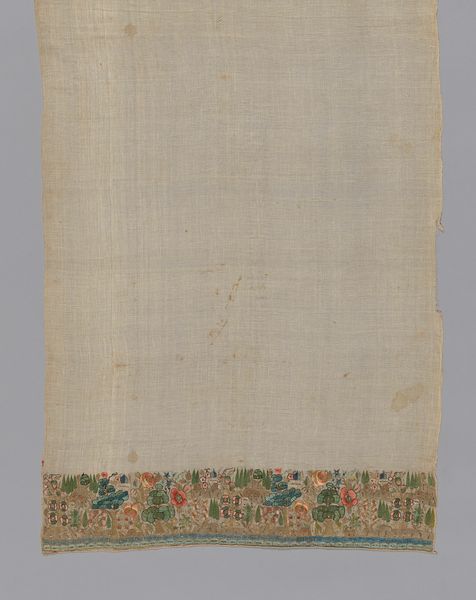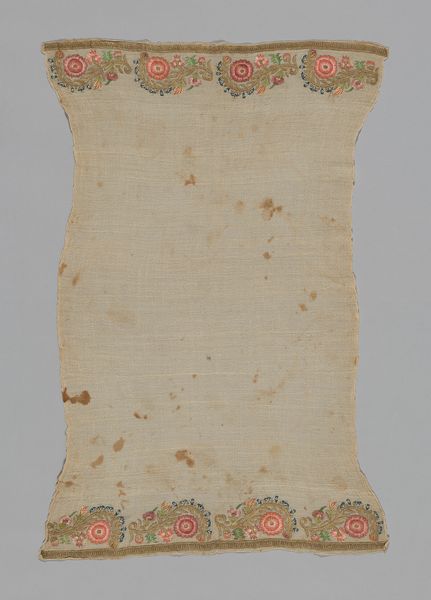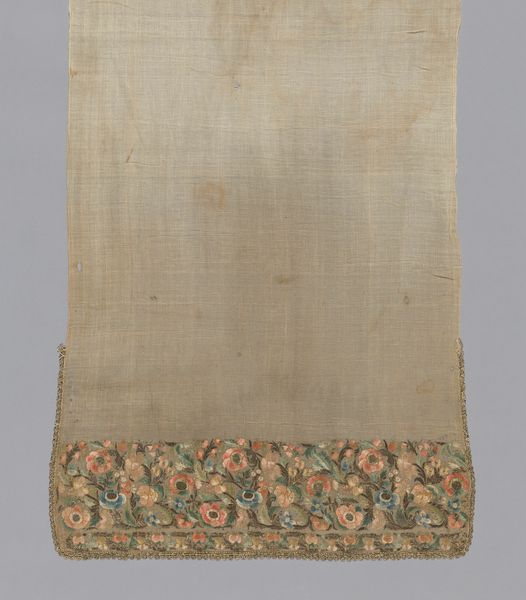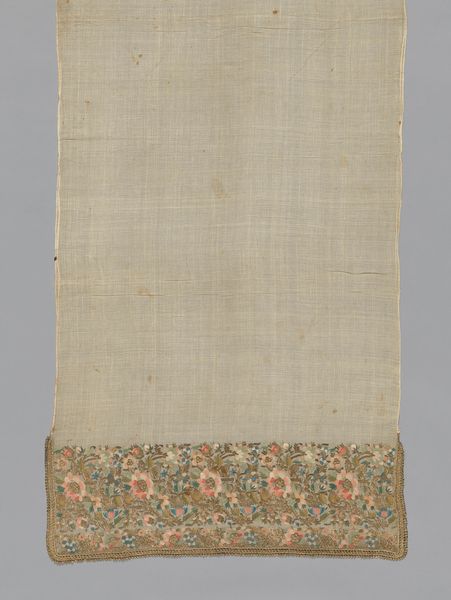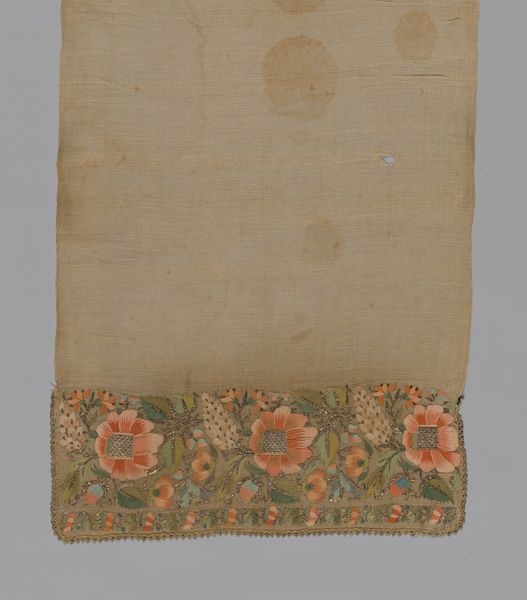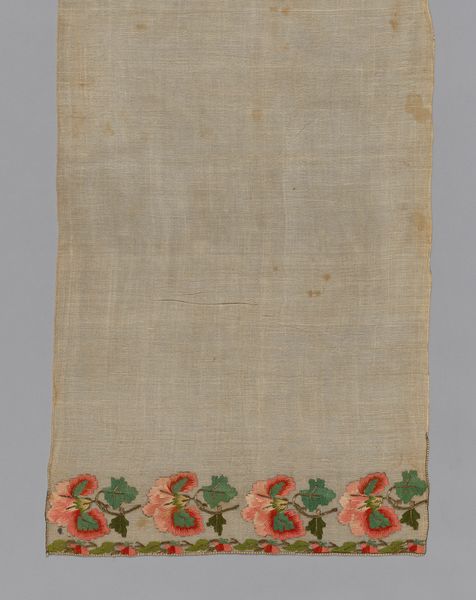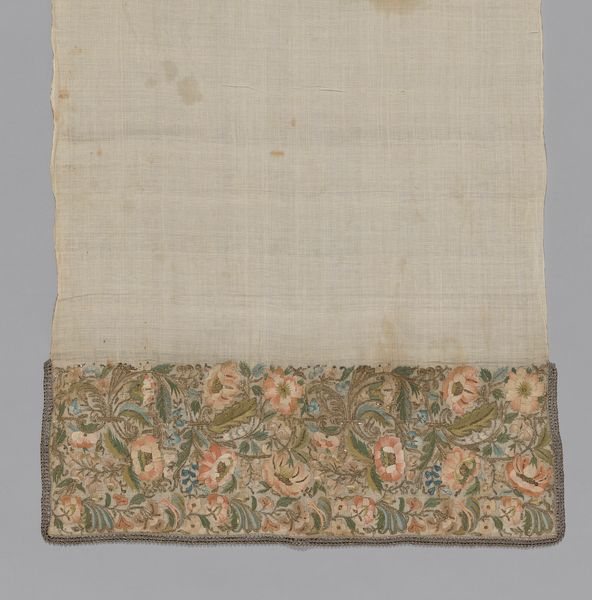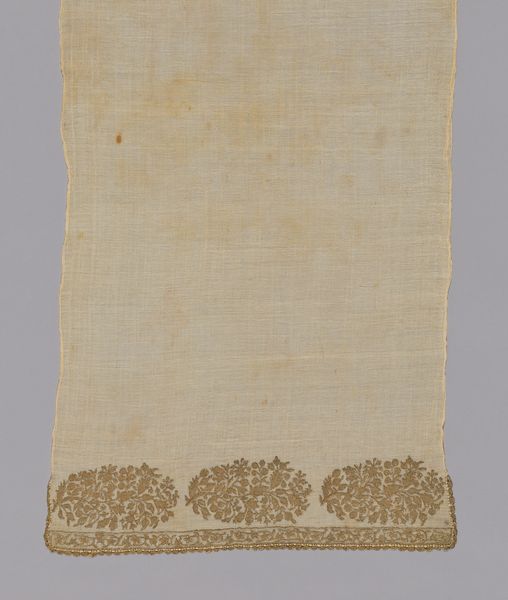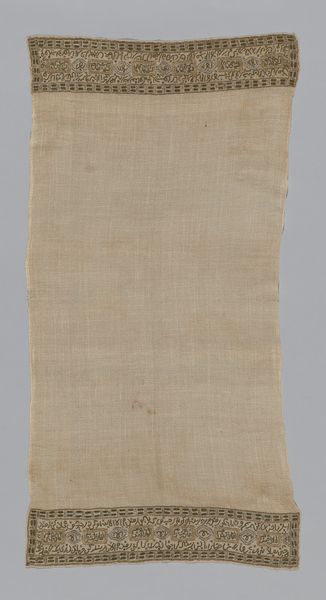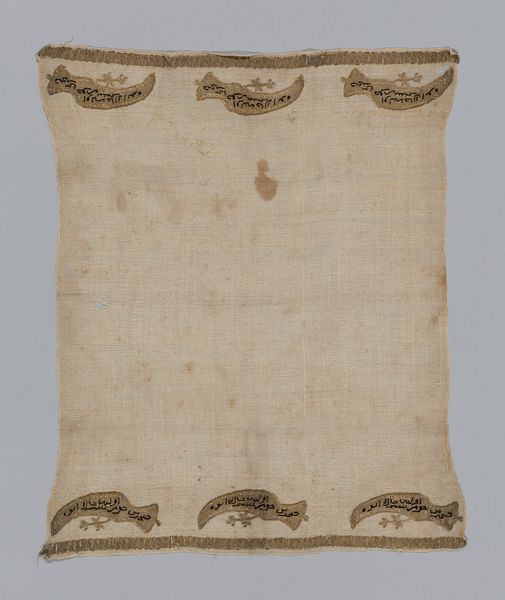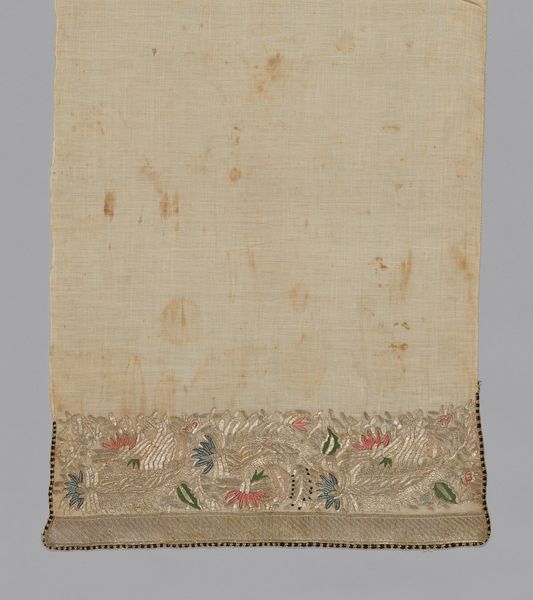
weaving, textile
#
natural stone pattern
#
aged paper
#
toned paper
#
water colours
#
pastel soft colours
#
weaving
#
textile
#
white palette
#
text
#
watercolour bleed
#
watercolour illustration
#
imprinted textile
#
watercolor
Dimensions: 133.1 × 53.6 cm (52 3/8 × 21 1/8 in.)
Copyright: Public Domain
Curator: This is an interesting piece—an undated 19th-century towel held in the collection of The Art Institute of Chicago. Editor: My initial reaction is one of muted domesticity. There is an almost ethereal quality to the aged textile, with what appears to be the stains of past use adding layers of untold stories. Curator: Yes, it presents a rather delicate interplay between texture and form. The eye is drawn to the bottom border with its small but exquisite embroidered details, those restrained floral motifs providing the only real structure in this very organic composition. It's fascinating how the anonymous creator uses textile and thread to such quiet, precise ends. Editor: Absolutely, and I think that embedded contrast is also relevant in considering gender and labor. We see a domestic object transformed by the time-intensive skill of presumably a female artisan into something of beauty—perhaps a subversive act or, at least, a claiming of creative space. Think of the historical connotations of the needle arts as a woman’s work. Curator: Certainly, viewing it from that angle gives us added perspectives. But for me, it's mainly how the interplay of materiality works. The warp and weft, those faint horizontal and vertical threads. And those delicate flowers along the hem. Its muted tones—they demonstrate a consciousness of artistic balance above all else. Editor: While the formal construction of it is obviously appealing, let’s not divorce ourselves from its potential social history. Considering hygiene practices during this period, its likely class associations come into play here. How did it function in someone's everyday life? What might it tell us about gendered roles, or economic stratification? Its staining is, literally, evidence. Curator: Those considerations enrich the artwork for me; nonetheless, when I engage with this piece, I ultimately perceive that the emphasis remains on aesthetic organization, however humble the medium and intention might appear. Editor: Yes, well, there is much here. It is beautiful for its historical content and its formal components. Ultimately, though, for me, that context provides a path for meaningful interpretation.
Comments
No comments
Be the first to comment and join the conversation on the ultimate creative platform.

